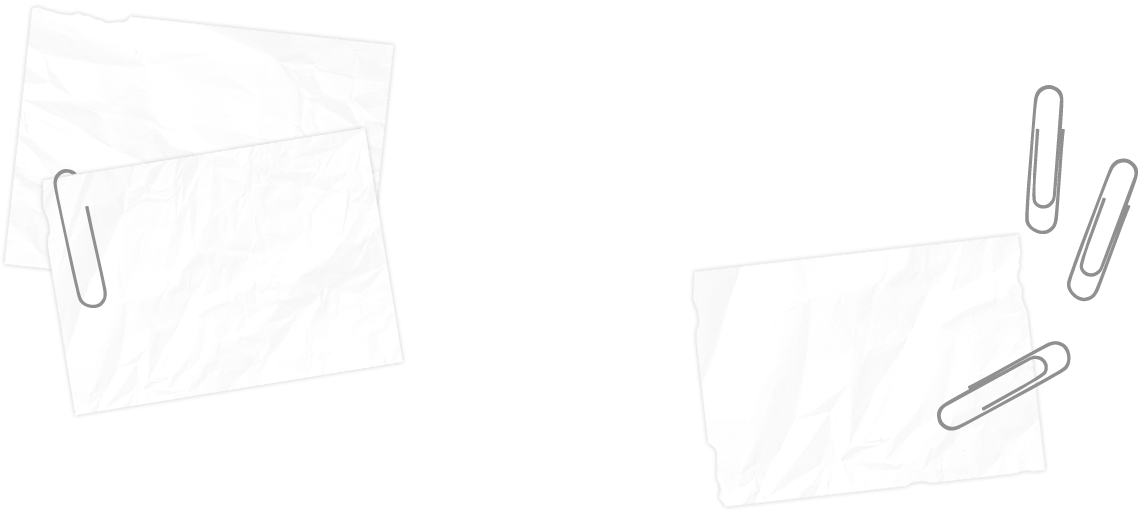
PAUL ECONOMEN
FREELANCE COPYWRITER

Robin Williams – Another Comedy of Errors

When he committed suicide on August 11, 2014 comedy icon Robin Williams joined a long list of artists who suffered tragically at the hands of psychiatrists.
On the surface, Williams’ death seemed straightforward.
According to USA Today’s website, the Marin County coroner’s report ruled his death as a “suicide by hanging, with no evidence of alcohol or illegal drugs in his system and only therapeutic concentrations of prescribed medications.”
True, all the drugs in his body were legal. But those “therapeutic” medications included mirtazapine, an antidepressant used for “major depressive disorder.”
Antidepressants can cause worsening depression, anxiety, panic attacks, hostility, aggression, psychosis, violence & suicidality. Numerous studies show them to be no more effective than placebo.
Also known as Remeron, it carries 10 international drug regulatory warnings on causing suicidal ideation.
In total, there are 32 possible side effects, says Drugs.com, including mood or mental changes, abnormal thinking, feelings of not caring, mood or mental changes, anger, mood swings and unusual excitement.
There’s more. The antipsychotic Seroquel was also found at the scene. While there were no traces of it in his body, eight pills were missing from the bottle.
This drug, says Drugs.com has 10 possible adverse reactions: psychosis, hallucinations, paranoid reactions, delusions, manic reaction, depersonalization, catatonic reaction, emotional lability, suicide attempt, and euphoria.
Despite all this, several news websites cast a suspicious eye toward Lewy body dementia as it has symptoms similar to Parkinson’s. As the “second most common type of progressive dementia after Alzheimer’s disease, it causes a progressive decline in mental abilities”, says the Mayo Clinic.
Which may be why “unnamed family sources” in the Williams’ family claimed that Lewy body dementia was a critical “triggering” factor in his suicide.
However, the Mayo Clinic website does not list suicidal thoughts or behavior among the possible symptoms of this condition.
That agrees with Gayatri Devi, an attending neurologist at Lenox Hill Hospital in New York who has treated such patients. He noted that “suicide does not usually occur in Lewy body dementia patients.”
And so, the loose strings remain ignored by the media and the medical community.
Meanwhile, we lose a talent who was equally talented in all genres. His peers and the public agreed: with 106 acting credits, he garnered two Emmys, five Grammys, six Golden Globes and two Screen Actor Guild Awards.

How to Sell Fairy Tales as Science
What do Munchkin Land and the DSM-5 have in common?
A lot, as you will see.
The fifth edition of the Diagnostic and Statistical Manual is the American Psychiatric Association’s latest attempt to legitimize itself.
At first glance it is most imposing. Each of its 567 mental disorders carries its own code, symptoms and diagnoses galore.
Further, its 947 pages list some 2,000 medicos and 17 prestigious institutions. A scholarly Introduction concludes that their “science of mental disorders continues to evolve”.
Surely, the APA is the eminent authority on all things mental.
But under a microscope…
Then we define science. Merriam-Webster says it’s “knowledge covering general truths or the operation of general laws especially as obtained and tested through the scientific method.”
Further, Merriam-Webster defines “scientific method” as “the rules and procedures for the pursuit of knowledge involving the finding and stating of a problem, the collection of facts through observation and experiment, and the making and testing of ideas that need to be proven right or wrong.”
Knowledge comes from the Latin scire, “to know”. As you see, this concrete foundation is composed of words like facts, laws, truth and tested.
And the “what’s wrong with this picture” prize goes to…
Suprise! The word cure is AWOL from every page. The dictionary says it is “a complete or permanent solution or remedy.” Why, then, is it never used in their bible?
Quite simple:
"We do not know the causes [of any mental illness]. We don’t have the methods of ‘curing’ these illnesses yet.”—Dr. Rex Cowdry, psychiatrist and former director of National Institute of Mental Health (NIMH)
Apparently they don’t know how it all comes about—and can’t cure it anyway. Given 62 years of DSM history, that sounds more fairy tale than scientific.
We’re not in Kansas anymore
Dorothy knows something about surreal. She’s been accosted by Miss Gulch, cursed by a cackling witch and plunked down in a Salvador Dali world. Still, she’s determined to find her way back to Auntie Em and Uncle Henry.
Cut to a huge hall and a towering curtain.
She’s with a scarecrow, a tin woodman—well you know.
A booming voice rumbles around the ominous walls: “Why do you seek my wisdom?”
The pig-tailed girl, confused and frightened, musters up her courage and inches forward.
Toto’s got his own ideas. He pulls back the screen to reveal a roundish man that looks a lot like Frank Morgan.
(We’ll skip the embarrassment and anger that follows).
Sheepishly, the old man hands Dorothy the DSM-5.
“Maybe this will help.”
Cracking open the book reveals a sea of troubles: Separation Anxiety Disorder (Page 190), Brief Psychotic Disorder (Page 94), Major Depressive Disorder (Page 160). Or how about Brief Psychotic Disorder (Page 94)?
All in all, 21 possibilities and another 42 “unspecified” disorders as a catchall. That’s 63 different ways to say sadness.
Scarecrow wants a brain? Let’s see… There’s Intellectual Disability Disorder, Somatic Symptom Disorder—
The tin woodman wants a heart? How about Depersonalization Disorder or Somatic Symptom—
–And the mousey lion could have Borderline Personality Disorder or Avoidant Personality Disorder or even Generalized Anxiety Disorder.
Dorothy slams down the book! No help here! Ah, that’s it! This chick has Oppositional Defiant Disorder!
Incoming!
And Dorothy is not the only one up in arms. Since DSM-5 debuted in 2013, it’s been bombarded by those who should be praising it.
Mark Schulman, President of San Francisco’s Saybrook University, said of the book, “There’s this propensity to push pills instead of looking at what’s really going on with the person.”
A Mother Jones article of May 14, 2013 pulled no punches: “Don’t Buy It. Don’t Use It. Don’t Teach It.”
Allen Frances, MD
They interviewed Allen Frances Allen, M.D. (Chair of the DSM-4 Task Force, no less), who protested that the book lumps together the serious conditions with those “that may just be an expectable reaction to everyday life.”
His book, “Saving Normal: An Insider’s Revolt Against Out-of-Control Psychiatric Diagnosis, DSM-5, Big Pharma, and the Medicalization of Ordinary Life”, says it all.
Thomas Insel, MD
NIMH Director
More salvos came from The Society of Humanistic Psychology, who formed the “Coalition for DSM-5 Reform”, collecting over 14,000 signatures protesting the book.
If its peers howl at their industry scriptures, it calls into question the validity of psychiatry itself.
As well it should. A practice riddled with uncertainties, no cures and no standards is pure fairy tale.
Listen to your Mother Jones: Don’t buy it. Don’t use it. Don’t Teach it.

"It’s important that the diagnostic system be taken away from the American Psychiatric Association. It needs to be in safer hands."
-Allen Frances MD, Chair of DSM-IV Task Force.

Then, Thomas Insel, Director of the National Institute of Mental Health, said in his blog of April 29, 2013, that NIMH will be “re-orienting its research away from DSM categories.”
The book’s “lack of validity” has them concerned. “The DSM diagnoses are based on a consensus about clusters of clinical symptoms, not any objective laboratory measure.”
“While DSM has been described as a ‘Bible’ for the field, it is, at best, a dictionary, creating a set of labels and defining each.”
How to Stop Sweating and Shaking Over Those Big Business Decisions

Decisions are not a democratic thing.
Trash the complicated charts with spider web diagrams.
You’ll just fry your brain.
The small stuff is easy, but those Goliath-sized choices…
They can bring a torrent of sweat and Richter-size nervousness.
As the complexity oozes in.
The biggest mistake you can make as a business owner
As a business owner, I would often put the “pro” in procrastination.
Not wise. Because he who hesitates is lost in this nanosecond age of global competition.
Napoleon Hill nailed it: “Indecision is the seedling of fear.”
While I was turning blue, life decided for me.
Because, as Will Rogers wryly noted, “Even if you are on the right track, you will get run over if you just sit there.”
After all, time ticks on. Sooner or later, I got an avalanche of “mañana”— and frenzied cope. I had to drop everything and douse this fire immediately! They don’t make aspirin big enough to zap that headache.
Is there a way to smother those flames of maybe?
How do you cut down on all that sweating and shaking?
Be like a Boy Scout
Be prepared!
Sure, emergencies will flare up out of nowhere: a water pipe explodes on the jobsite. A major client suddenly cancels their order.
And these urgencies, like a midnight tornado, add turbulence as they pull your decision making into the immediacy of the moment and away from expansion—where it needs to be. You’re reactive instead of proactive.
Avoid that by following your scout manual — aka the company policy you wrote ahead of time to contain the surprises of life.
So when they erupt, you can either scramble for a time-and-a-half plumber or calmly move into action.
And all the while, focus your decision-making on the big picture.
Don’t count the carnage
Injuries will heal, crashes can be reversed. Regret is leprosy to business survival; its scars spread to all involved.
And it’s infinitely more painful than simply doing something — anything.
The problem is not the wreckage we cause, but rather our failure to take responsibility for that strewn debris.
So, instead of fretting over the rubble, take a tip from Robert Kiyosaki: “Don’t waste a good mistake…learn from it.”
That holds true for you and your staff. Those who will decide ultimately get more respect than the wafflers.
And as long as you hit more home runs than flies, you’re fine. But any decision beats no decision.
Keep the epidemic at bay
If you don’t delegate any company decisions, your business will soon be infected with the one-man-stand disease.
The symptoms are easy to spot: a snail’s pace of activity and a frantic, frustrated staff. Micromanagement is the father of uncertainty and fear.
And if left unchecked, the disease spreads procrastination and confusion as decisions wind up in the pending basket. Choices are never made in turmoil.
As this virus spreads, it cripples your workforce as your business contracts, just like that noose you tighten around the competency and stability of your staff. Thus sprouts the seeds of insurrection.
What’s the vaccine? Trust in the team.
You hired them. You trained them. Now let them make their own decisions. Any uncertainties they have are cured by simply having them follow your written policy.
Shed that flab
Like it or not, indecisions pile up like a ton of love handles. Time to go on a diet.
Otherwise, they will hang around like that third helping of pumpkin pie.
Ugh!
So make a list of those indecisions; complete what you can. Every decision that you finally make will feel like you’ve shed a pound.
You’re looking better already.
Paul Economen fuses his journalism and sales experience to create a professional customer case study that separates your business from the crowd and makes your credibility glow.
There’s more information here:www.TheWriterNamedPaul.com
